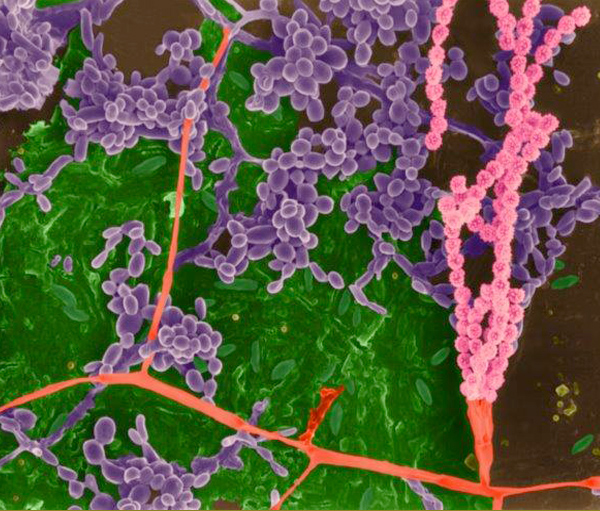
© Dennis Kunkel Microscopy
Home Resources Pathogens What is Dracunculus medinensis?
What is Dracunculus medinensis?

© Dennis Kunkel Microscopy
Dracunculus medinensis is a large parasitic nematode.
What diseases are caused by Dracunculus medinensis?
Dracunculus medinensis causes the disease dracunculiasis which is commonly referred to as Guinea worm disease (GWD). Individuals become infected by drinking water containing water fleas harboring the Guinea worm larvae. Stomach acid is able to digest the water fleas; however, the Guinea worm larvae survive. During approximately the next year the female Guinea worm larvae will grow into full size adults which can be two to three feet long. These adult female worms then migrate and emerge from the skin anywhere on the body, but usually on the lower limbs and feet.
When the worm is ready to discharge its larvae it will emerge from the skin causing a blister. This blister is often accompanied by burning and itching of the skin in the area of the lesion. The infected person may also develop fever, nausea, vomiting, and diarrhea. The blister ruptures within 24-72 hours, and upon immersion of the affected area into water the worm will release a milky white liquid containing millions of immature larvae into the water. For several days after it has emerged from the ulcer, the worm is capable of releasing more larvae whenever it comes in contact with water. The prognosis is good unless a secondary bacterial infection of the lesion occurs.
Who is more susceptible to Dracunculus medinensis?
Susceptibility to infection is universal. There is no acquired immunity, as multiple and repeat infections may occur in the same individual.
Epidemiology of Dracunculus medinensis
GWD is limited to 5 sub-Saharan African countries. In 2007, the two most endemic countries, Sudan (5,815) and Ghana (3,358) reported a total of 9,173 cases. Other endemic countries reporting cases of GWD in 2007 were Mali (313), Nigeria (73), and Niger (14 cases). Transmission of the disease is most commonly in remote rural villages. In some locales nearly all inhabitants are infected.
Incubation Period
The incubation period is approximately 12 months.
Diagnosis of GWD
Diagnosis of GWD is made by visual identification of the female Guinea worm protruding from a skin lesion. Microscopic identification of larvae is also a method of diagnosis.
Treatment of GWD
Currently, there is no drug to treat GWD and no vaccine to prevent infection. The most common practice to treat GWD still involves extracting the worm from the wound a few centimeters a day by wrapping it around a stick. This slow process can take many days and in some cases up to a few weeks. Nevertheless, it is necessary to avoid breakage and leaving behind a portion of the worm.
Contact EHA Consulting Group today for more information about how we can assist your company.